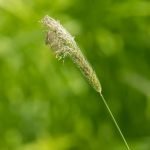Are you looking for simple indoor gardening ideas to bring some greenery into your home? Indoor gardening is not only a great way to decorate your living space but also has numerous benefits for both physical and mental well-being. From air purification to stress reduction, indoor gardening offers a range of advantages that can enhance your quality of life.
Indoor gardening provides the opportunity to grow a variety of plants, even in the limited space of an apartment or small home. Whether you’re a beginner or have a green thumb, there are plenty of options for creating your own indoor garden oasis. With the right plants, tools, and knowledge, anyone can enjoy the beauty and benefits of indoor gardening.
In this article, we will explore the many benefits of indoor gardening and provide helpful tips on choosing the right plants, essential tools and supplies, creating a suitable garden space, low-maintenance ideas for busy individuals, DIY projects for small spaces, proper plant care and maintenance tips, incorporating dcor for aesthetic appeal, and troubleshooting common issues. Embrace the joy of indoor gardening as we guide you through simple yet effective ways to cultivate your own green paradise indoors.
Choosing the Right Plants for Indoor Gardening
When it comes to indoor gardening, choosing the right plants is essential for the success of your garden. Not all plants thrive indoors, so it’s important to select ones that are well-suited for an indoor environment. Fortunately, there are plenty of plant options that can thrive inside your home or office with minimal maintenance.
Some popular choices for simple indoor gardening ideas include low-light plants such as pothos, snake plants, and peace lilies. These types of plants are perfect for spaces with limited natural light and are incredibly easy to care for.
For those with a bit more natural light in their indoor space, consider adding herbs like basil, mint, and chives to your indoor garden. Not only do they add a touch of green to your home, but they also provide fresh ingredients for cooking.
In addition to low-light and herb options, succulents and cacti are great choices for indoor gardens as they require very little water and can tolerate varying levels of light. These plants come in a wide variety of shapes and colors, making them both visually appealing and easy to care for.
It’s important to keep in mind that different plants have different care requirements, so it’s crucial to research the specific needs of the plants you choose before bringing them into your indoor space. With the right selection of plants, you can create a thriving indoor garden that adds beauty and tranquility to your home or office.
| Indoor Plant Options | Care Requirements |
|---|---|
| Pothos | Low light; regular watering |
| Basil | Medium light; frequent watering |
| Succulents/Cacti | Bright light; infrequent watering |
Essential Tools and Supplies for Indoor Gardening
When it comes to indoor gardening, having the right tools and supplies can make all the difference in the success of your plants. Whether you’re a beginner or a seasoned indoor gardener, having the essential items on hand is crucial for nurturing healthy and thriving plants. Here are some must-have tools and supplies for simple indoor gardening ideas:
- Pots and containers: Choose pots that have drainage holes to prevent overwatering. Make sure to select sizes that are appropriate for the plants you’ll be growing.
- Soil and potting mix: Use high-quality soil that is specifically formulated for indoor plants. Look for mixes that provide good drainage and aeration for optimal plant health.
- Watering can or spray bottle: A watering can with a narrow spout is ideal for delivering water directly to the plant’s base without splashing onto leaves. Alternatively, a spray bottle can be used for misting moisture-loving plants.
- Pruning shears: Keep your plants tidy and encourage healthy growth by having a pair of sharp pruning shears on hand. Trim away dead or yellowing leaves, as well as any overgrown branches.
In addition to these basic tools and supplies, there are also some optional items that can enhance your indoor gardening experience:
- Gardening gloves: Protect your hands from soil, thorns, and other potential hazards while working with your plants.
- Fertilizer: Consider using a gentle, all-purpose fertilizer formulated specifically for indoor plants to promote healthy growth.
- Grow lights: If your indoor space lacks natural sunlight, consider investing in grow lights to provide supplemental lighting for your plants.
By ensuring you have these essential tools and supplies on hand, you’ll be well-equipped to embark on any simple indoor gardening ideas with confidence. Properly caring for your indoor garden starts with having the right equipment at your disposal.
Creating a Suitable Indoor Garden Space
Utilizing Natural Light
When creating a suitable indoor garden space, it is essential to consider the natural light available in your home. Most plants need adequate sunlight to thrive, so it is important to place your indoor garden near a window or in a well-lit area of your home.
South-facing windows typically receive the most sunlight throughout the day, making them an ideal location for your indoor garden. If you have limited access to natural light, consider using grow lights to supplement the amount of light your plants receive.
Choosing the Right Containers
Selecting the right containers for your indoor plants is crucial for creating a suitable indoor garden space. Choose pots and planters that have drainage holes to prevent overwatering and root rot.
Consider the size of the container based on the specific needs of each plant, ensuring that they have enough room to grow and thrive. Additionally, you can get creative with your container choices by using hanging baskets, mason jars, or even repurposed containers such as tin cans or old tea cups.
Creating Adequate Humidity
Many indoor plants thrive in humid environments, so it is important to consider humidity levels when creating a suitable indoor garden space. To increase humidity around your plants, you can mist them regularly with water or place a tray filled with pebbles and water beneath their containers. Another simple way to create adequate humidity is by grouping plants together, as they release moisture through transpiration which can benefit surrounding plants.
Low-Maintenance Indoor Gardening Ideas for Busy Individuals
For busy individuals who still want to enjoy the benefits of indoor gardening, there are plenty of low-maintenance options to choose from. One simple indoor gardening idea is to opt for plants that require minimal care, such as succulents and cacti. These plants are known for their ability to thrive in dry conditions and can go for longer periods without water, making them perfect for those with a hectic schedule.
Another low-maintenance indoor gardening idea is to create a self-watering system for your plants. There are various self-watering planters available on the market, or you can even make your own using recycled materials. This system will help ensure that your plants receive the right amount of water without needing constant attention, allowing you to focus on other tasks without worrying about your garden.
Additionally, incorporating low-maintenance gardening techniques such as hydroponics or aquaponics can be a great way to reduce the amount of time and effort required for traditional soil-based gardening. These systems utilize water-based solutions to deliver nutrients directly to the plants’ roots, eliminating the need for regular watering and soil maintenance. With these low-maintenance indoor gardening ideas, even the busiest individuals can enjoy the beauty and health benefits of having greenery inside their homes.
DIY Indoor Garden Projects for Small Spaces
With a smaller living space, it can be challenging to find the right indoor gardening projects that fit your area. But don’t worry, there are plenty of simple indoor gardening ideas that are perfect for small spaces. One great option is creating a vertical garden using hanging pots or a DIY trellis system. This not only saves space but also adds depth and visual interest to your indoor garden.
Another option for small spaces is creating a windowsill herb garden. With just a few small pots and some natural light, you can grow fresh herbs like basil, parsley, and mint right in your kitchen. Not only does this add beauty to your space, but it also provides you with fresh ingredients for cooking.
For those who have limited floor space, consider creating a terrarium garden. These self-contained ecosystems are easy to maintain and add a touch of nature to any room. Plus, they can be customized with different plants, rocks, and other decor to fit your style.
These simple indoor gardening ideas for small spaces allow anyone to enjoy the benefits of gardening without needing a large outdoor area. Whether you choose to create a vertical garden, windowsill herb garden, or terrarium garden, there are plenty of options for adding greenery and life to even the smallest of spaces.
| Indoor Garden Project | Description |
|---|---|
| Vertical Garden | Create visual interest and save space by using hanging pots or a DIY trellis system. |
| Windowsill Herb Garden | Grow fresh herbs right in your kitchen with just a few small pots and some natural light. |
| Terrarium Garden | Create self-contained ecosystems with different plants and rocks for customization. |
Tips for Proper Indoor Plant Care and Maintenance
Indoor plants require proper care and maintenance to thrive and beautify your living space. Here are some tips to help you keep your indoor garden healthy and flourishing.
Watering
One of the most important aspects of indoor plant care is proper watering. Different plants have different watering needs, so it’s crucial to research the specific requirements of each type of plant you have. Overwatering can lead to root rot, while underwatering can cause wilting and stunted growth. Checking the moisture level of the soil before watering and using a watering can with a narrow spout for accuracy can help prevent these issues.
Lighting
Another key factor in indoor plant care is providing adequate lighting. Most indoor plants require at least some natural light to photosynthesize and grow properly. Place your plants near windows where they can receive indirect sunlight, or consider using grow lights for plants that need more intense light. Regularly rotating your plants ensures that all sides receive an equal amount of light, promoting even growth.
Fertilizing
Indoor plants also benefit from regular fertilization to provide essential nutrients for healthy growth. Choose a high-quality, balanced fertilizer specifically formulated for indoor plants and follow the instructions on the packaging for application frequency and dosage. Be cautious not to over-fertilize, as this can result in chemical burn or nutrient imbalances in the soil.
Proper indoor plant care and maintenance is vital for the longevity and vibrancy of your indoor garden. By paying attention to watering, lighting, and fertilizing needs, you can enjoy a thriving collection of greenery indoors while enhancing the aesthetics of your home.
Incorporating Indoor Garden Décor for Aesthetic Appeal
Indoor gardening not only brings natural beauty and freshness into your home, but it also provides an opportunity to enhance the aesthetic appeal of your living space. By incorporating decorative elements into your indoor garden, you can create a visually appealing and harmonious environment that adds to the overall ambiance of your home. Here are some simple ideas for incorporating indoor garden dcor:
1. Framed botanical prints: Add a touch of elegance to your indoor garden space by hanging framed botanical prints on the wall. These prints can feature illustrations or photographs of plants and flowers, complementing the natural elements in your indoor garden.
2. Decorative planters: Choose stylish and eye-catching planters to house your indoor plants. Opt for a variety of shapes, sizes, and materials such as ceramic, terracotta, or woven baskets to add visual interest to your indoor garden.
3. Accent lighting: Illuminate your indoor garden with strategically placed accent lighting. Consider using fairy lights, string lights, or LED spotlights to highlight the beauty of your plants and create a cozy atmosphere in the evenings.
4. Natural elements: Incorporate natural textures and materials like wood, stone, or rattan into your indoor garden dcor. This can be done through furniture pieces such as wooden shelving units or stone accents like pebbles and rocks placed around the base of the plants.
5. Artistic displays: Showcase your creativity by arranging artistic displays within your indoor garden space. This could include arranging decorative rocks or crystals among the plants, or creating a miniature Zen garden for a tranquil focal point.
Incorporating these dcor ideas into your indoor garden will not only elevate its visual appeal but also create a more inviting and serene atmosphere within your home. By paying attention to details such as planters, lighting, and artistic displays, you can transform your indoor garden into a beautiful oasis that reflects your personal style and enhances the overall look of your living space.
Troubleshooting Common Issues in Indoor Gardening
Indoor gardening can be a fulfilling and enjoyable hobby, but it’s not without its challenges. Like any type of gardening, indoor plants can encounter issues that can impact their growth and health. However, with the right knowledge and proactive approach, you can troubleshoot and address common problems in indoor gardening.
One common issue in indoor gardening is overwatering or underwatering your plants. It’s essential to pay attention to the moisture levels of your soil to prevent root rot or dehydration. Consider investing in a moisture meter to accurately gauge when your plants need watering.
Another frequent problem is pests and diseases that can affect indoor plants. Keep an eye out for signs of pest infestations such as yellowing leaves, holes in foliage, or sticky residue on the plant. If you notice these symptoms, take action promptly by using natural pest control methods or introducing beneficial insects to combat the issue.
Furthermore, inadequate lighting can also pose a challenge for indoor gardeners. Insufficient light can lead to leggy growth and poor flowering in plants. Evaluate the natural light conditions in your home and consider supplementing with grow lights if necessary to ensure that your plants are receiving adequate light for healthy growth.
By being attentive to these potential issues and taking proactive steps to address them, you can overcome common challenges in indoor gardening and create a thriving green oasis within your home.
Conclusion
In conclusion, indoor gardening offers a multitude of benefits and provides a rewarding experience for individuals looking to cultivate their green thumb within the comfort of their own home. From improving air quality to reducing stress levels, the advantages of embracing simple indoor gardening ideas are truly endless. By carefully selecting the right plants, utilizing essential tools and supplies, and creating a suitable indoor garden space, anyone can embark on this fulfilling journey.
For busy individuals looking to add some greenery to their home without much effort, low-maintenance indoor gardening ideas such as succulents or air plants are perfect choices. These resilient plants require minimal care and can thrive in various environments, making them ideal for those with busy schedules. Additionally, DIY indoor garden projects designed for small spaces offer creative solutions for maximizing greenery in limited areas, ensuring that everyone can enjoy the beauty of nature indoors.
Proper care and maintenance are crucial for the success of an indoor garden. By following simple tips for watering, fertilizing, and providing adequate light exposure, individuals can ensure that their indoor plants remain healthy and thriving. Furthermore, incorporating indoor garden dcor not only enhances aesthetic appeal but also creates a harmonious ambiance in any living space. With the right approach and mindset, anyone can fully embrace the joy of indoor gardening and reap the countless rewards it has to offer.
Frequently Asked Questions
How Do You Make a Mini Indoor Garden?
Making a mini indoor garden can be done by choosing the right containers, soil, and plants. Consider using small pots, good quality potting mix, and plants that thrive in indoor conditions. Make sure to place the garden in a spot with adequate sunlight and water the plants regularly.
What Vegetables Are Good for an Indoor Garden?
Some vegetables that are good for an indoor garden include tomatoes, peppers, lettuce, spinach, and green onions. These vegetables can be grown in containers and don’t require a lot of space. It’s important to choose varieties that are suitable for indoor growing conditions and provide them with proper care.
What’s the Easiest Food to Grow Indoors?
Herbs like basil, mint, and chives are some of the easiest foods to grow indoors. They require minimal space, sunlight, and maintenance, making them ideal for beginners or those with limited gardening experience. Other easy foods to grow indoors include microgreens, radishes, and dwarf varieties of vegetables like carrots or tomatoes.

Welcome to my gardening blog! I am passionate about plants and enjoy sharing my knowledge and experiences with others. In this blog, I will write about everything related to gardening, from tips on how to get started to updates on my own garden projects.





